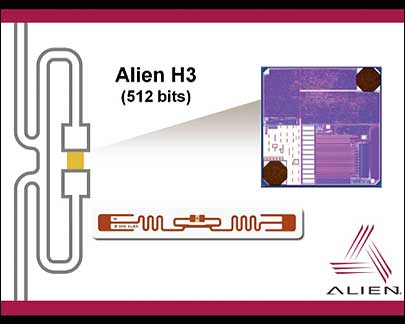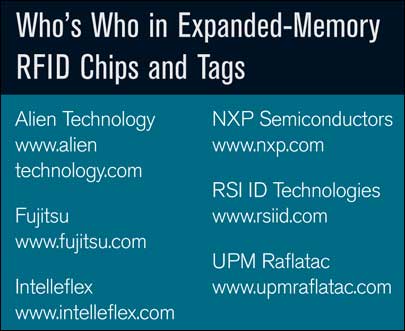Jun 01, 2008In the November/December 2006 print issue, we looked at memory-rich Gen 2 passive tags—those that could hold from 64 to 224 bits of user-programmable memory—and we reported that 64,000-bit tags were being developed (see Thanks for the Memory). Since then, Intelleflex has unveiled a line of high-memory tags based on its 64-kilobit chips, including tags designed to track the chain of custody of keys in casinos and law enforcement settings, and tags to track assets in harsh environments and extreme temperatures.
The company also has been working with Boeing to test an EPC Gen 2-compliant passive tag designed specifically for use with Boeing's Dreamliner 787 line of aircraft. Boeing has identified storage of maintenance and repair data as potential uses for high-memory tags.
Other end users have identified the need to store more data on tags to support a variety of applications—from tracking baggage at airports to recording production and maintenance information during manufacturing or repair processes. Now there's a new crop of chips with expanded memory capacity to fulfill that demand.
In April, Alien Technology unveiled the Higgs 3 chip, its latest offering for EPC Gen 2 UHF tags. The Higgs 3, which is scheduled for availability this summer, has 512 bits of user memory as well as a precoded 64-bit unique tag identification number, double the size of what was available on the previous version of the chip.
The company cited airline baggage tracking and chain-of-custody records for pharmaceutical products as potential uses for the expanded user memory. The Higgs 3 also includes a read password that adds a layer of security, preventing unauthorized tag reads. The updated chip consumes less power and offers a better read range than previous versions, the company says.
The chip supports custom commands, such as electronic article surveillance (EAS), which can be used for security purposes by retailers or other users, and offers a read password for security. It also uses less power than its predecessors, enabling better read range and reliability, Kodritsch says.
RSI ID Technologies, which was recently purchased by Sirit Technologies, is using NXP's Ucode G2XM chips in some of its tags. The company says its customers want the expanded memory for a variety of applications, from tracking baggage to tracing livestock. Another application where extra user memory is needed is an industrial laundry, where information about the number of times an item is cleaned and details about stains or problems associated with the garment can be written to the tag.
UPM Raflatac is also using the Ucode chips in a series of tags designed for the retail market. The expanded memory can be used to record expiration dates for fresh produce, or size and color information for clothing. The tags make use of the chips' EAS capabilities, which can be turned on and off by EPC Gen 2 RFID readers.
Fujitsu is getting ready to ship a tag that it says has the highest amount of user memory available anywhere—64 kilobytes. In January, the company announced plans for a passive UHF tag, compliant with the EPC Gen 2 standard, that offers 64 kilobytes of ferroelectric random access memory (FRAM). The tag, which uses Fujitsu's own chip, is aimed at airline manufacturers and could be used in other large-scale manufacturing environments.



